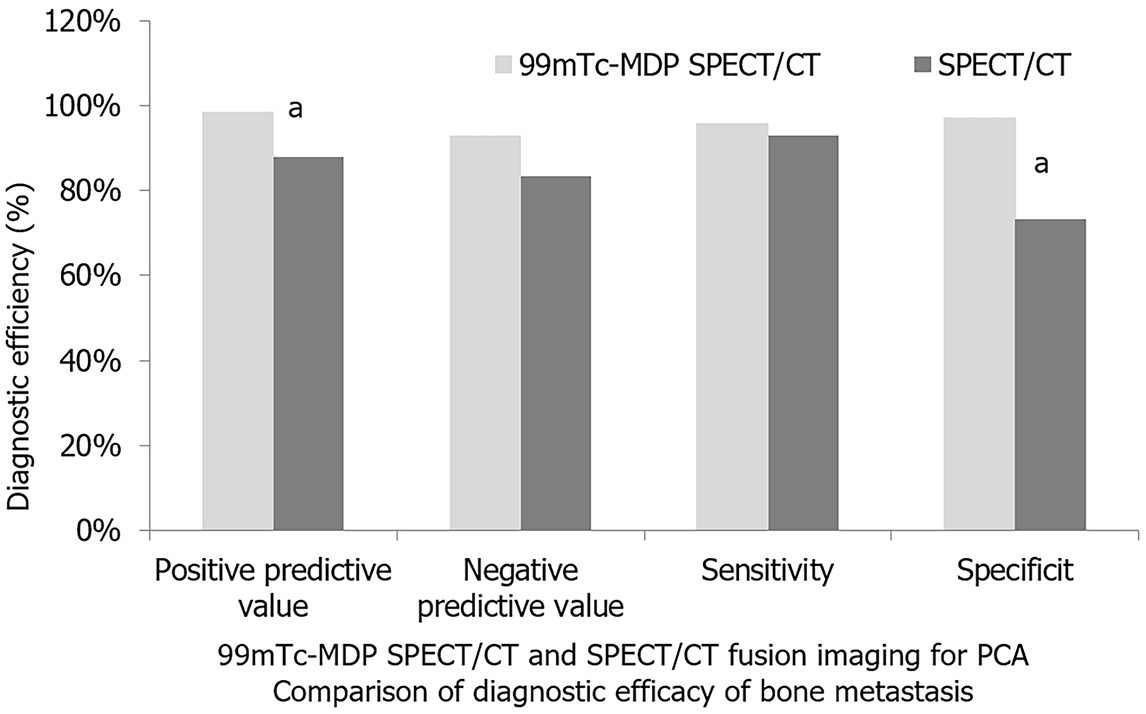Copyright
©The Author(s) 2024.
World J Clin Cases. Jul 16, 2024; 12(20): 4082-4090
Published online Jul 16, 2024. doi: 10.12998/wjcc.v12.i20.4082
Published online Jul 16, 2024. doi: 10.12998/wjcc.v12.i20.4082
Figure 1 Diagnosis efficacy of technetium-99m-methylene diphosphonate single photon emission computed tomography (SPECT)/computed tomography (CT) and SPECT/CT in diagnosing prostate cancer bone metastasis.
aP < 0.05. 99mTc-MDP SPECT/CT: Technetium-99m-methylene diphosphonate single photon emission computed tomography/computed tomography.
Figure 2 Comparison of prostate-specific antigen (PSA)/free prostate-specific antigen (PSA) values of patients with and without prostate cancer bone metastasis in the control and experimental groups.
aP < 0.05, bP < 0.05 between patients with prostate cancer bone metastasis (PCBM) and without PC and between patients with PCBM and with PC only, respectively. CE: Exp group; CG: Ctrl group.
Figure 3 Specificity and sensitivity of technetium-99m-methylene diphosphonate single photon emission computed tomography (SPECT)/computed tomography (CT) imaging combined with prostate-specific antigen (PSA)/free PSA in diagnosing prostate cancer bone metastasis.
99mTc-MDP SPECT/CT: Technetium-99m-methylene diphosphonate single photon emission computed tomography/computed tomography.
Figure 4 Accuracy of technetium-99m-methylene diphosphonate single photon emission computed tomography (SPECT)/computed tomography (CT) imaging combined with serum prostate-specific antigen (PSA)/free PSA ratio to prostate cancer bone metastasis.
99mTc-MDP SPECT/CT: Technetium-99m-methylene diphosphonate single photon emission computed tomography/computed tomography.
- Citation: He J, Zhong YP, Zhang S. Technetium-99m-methylene diphosphonate single photon emission computed tomography/computed tomography combined with prostate-specific antigen/free prostate-specific antigen ratio for bone metastasis of prostate cancer. World J Clin Cases 2024; 12(20): 4082-4090
- URL: https://www.wjgnet.com/2307-8960/full/v12/i20/4082.htm
- DOI: https://dx.doi.org/10.12998/wjcc.v12.i20.4082












